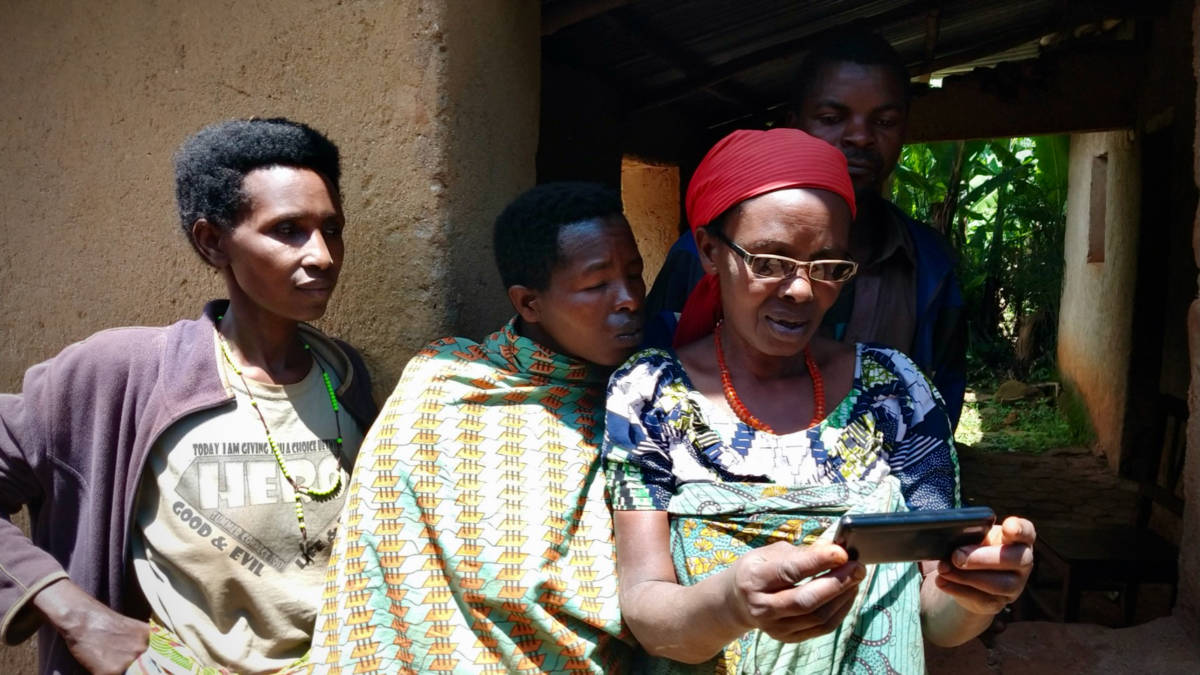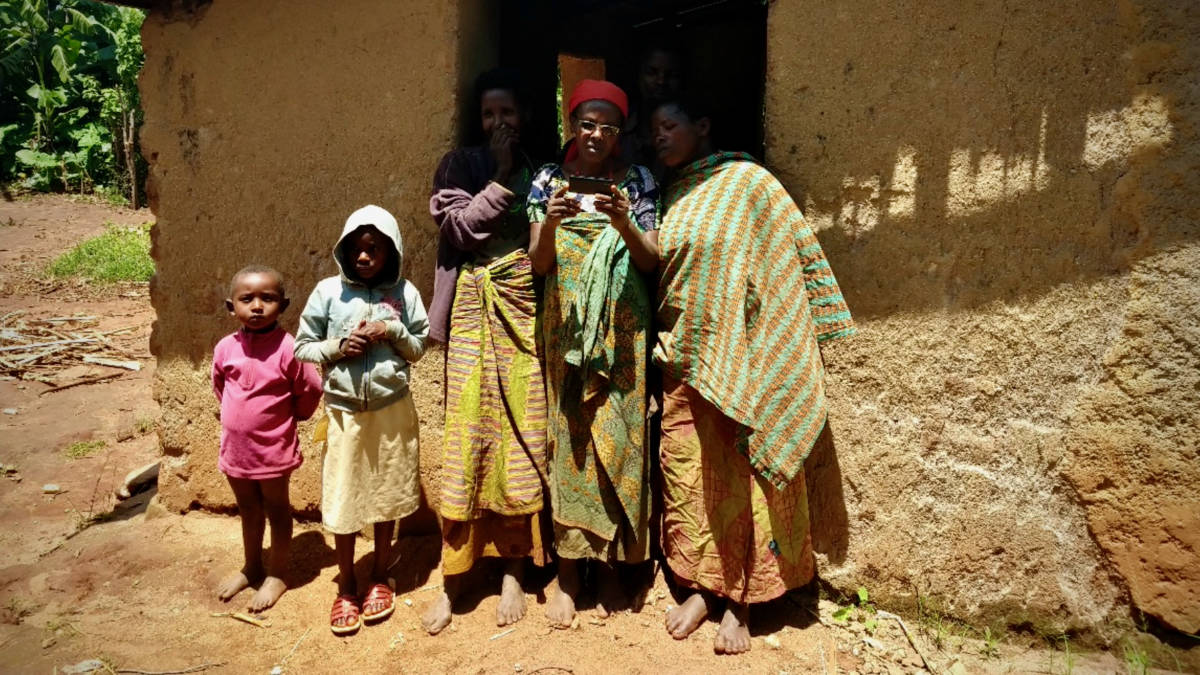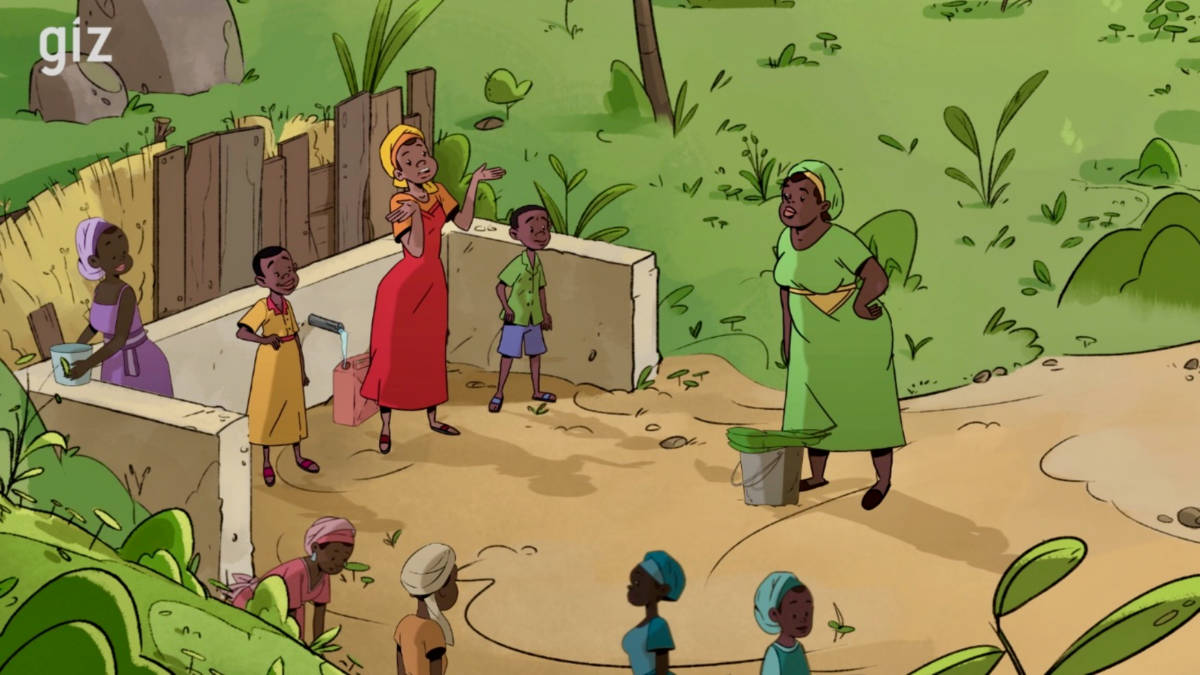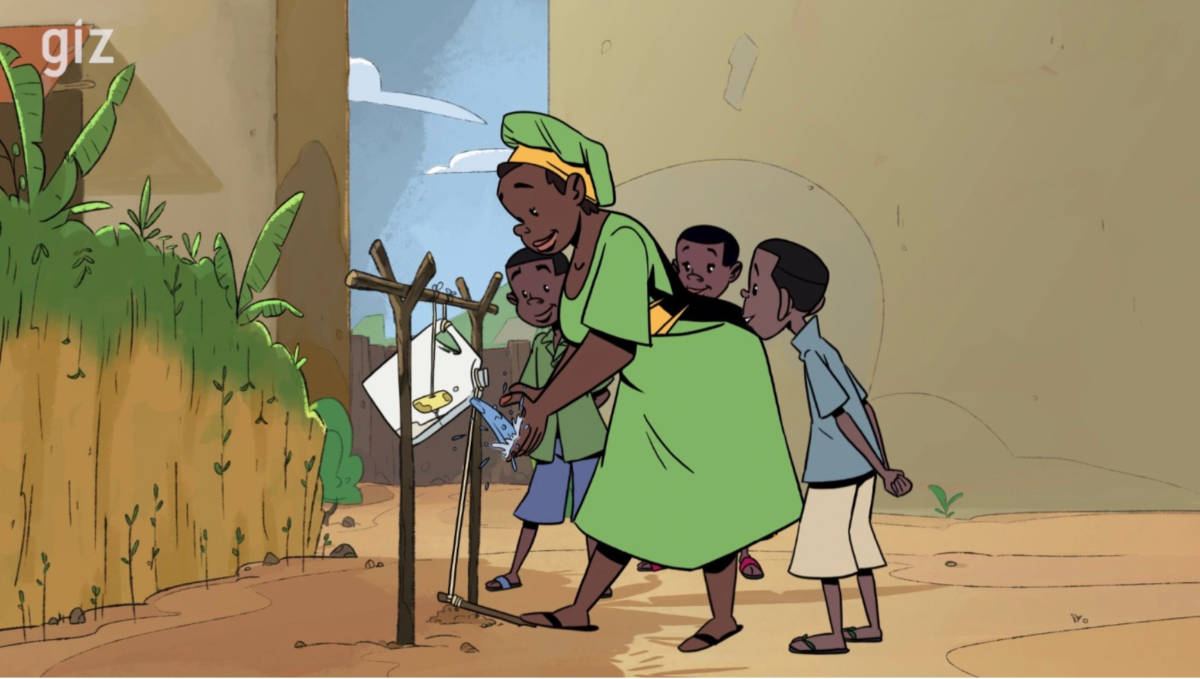Is Mass Media the High Road to Behaviour Change?
Is Mass Media the High Road to Behaviour Change?
A closer look at hygiene and sanitation behaviour change work in Burundi

Household watching a video on their phone
Photo: © A. Dubois
Photo: © A. Dubois
“More people have cell phones than toilets”. This oft-repeated statement reminds us of two flabbergasting issues. There are billions of people who still don’t have access to improved sanitation, and that unguided technological advancement drives strange developmental priorities. What is critical is that the disproportion comes at great risk for many. Nearly one million people are killed by water, sanitation, and hygiene-related diseases every year.
Only a shocking disproportion or also a grand opportunity?
Burundi is no exception, with more than 70% of the population lacking basic sanitation facilities and only 4% washing their hands with water and soap. Precarious sanitation infrastructure and poor hygiene behaviour are prominent features of the WASH sector in what is one of the poorest and most densely populated countries in the world.
Despite the poverty level, about two thirds of the rural households own a mobile phone. This seems a staggering disproportion, on the one hand, but can the prevalence of mobile phones maybe also pose a grand opportunity?
Since 2016, the GIZ Water and Sanitation Sector Programme in Burundi has been on a mission to fight the WASH problem at its source, aiming at behavioural changes in the area of handwashing, the handling of drinking water, and improved latrines. Public education about the health hazards of poor hygiene and sanitation practices is key to reducing the prevalence of diarrhoea and preventing cholera outbreaks that are all too frequent in Burundi.
« Transport your water safely », « The benefit of an Akasuga latrine »,
« Keep your water clean », « Let’s build a tippy-tap »
Snapshots of videos by © GIZ/Development Media International
« Keep your water clean », « Let’s build a tippy-tap »
Snapshots of videos by © GIZ/Development Media International
Over the past few decades, mass media campaigns have been used widely to convey messages to the general public. An entire array of different channels was used, including television, radio, billboards and newspapers. Such campaigns have proved to be pivot to changing people’s behaviour in several countries, notably addressing tobacco use, cancer screening, heart-disease prevention, and many other public health-related issues.
In September 2019, the Water and Sanitation Sector Programme with the support of Development Media International (DMI), a not-for-profit organisation specialising in mass media campaigning, started a nine-months social and behaviour change campaign using mass media to target a total population of approximately 720,000. Given that radio is the most popular medium in Burundi, it was decided to create radio spots and have them broadcast three times a day on three different stations.

Household watching a video on their phone | Photo: © A. Dubois
With the aim to increase outreach and penetration of the campaign, radio spots have been complemented with short videos in the form of cartoons. The project soon realised that in order to reach a large audience with these kinds of tools, one needed to walk away from traditional face-to-face events. Luckily the omnipresent mobile phones were found to be the right tool to convey the messages in Burundi. Therefore, the Water and Sanitation Sector Programme disseminated 6,000 SD cards to targeted beneficiaries in the intervention area. The cards have the intervention videos on them, which can be viewed on any kind of phone and shared via Bluetooth. Sharing the videos with others neither requires sophisticated phones, nor access to the internet or a cellular network. This facilitates the easy spread of the videos and their messages even beyond the time span of the project.
Using mass media doesn’t ensure you reach people’s minds
It is essential that radio spots and video content generate interest amongst the targeted audience. Entertainment is a key factor here, and what could be more entertaining than drama? Stories have resonated with human beings for thousands of years. We are drawn to them in ways that neither facts nor figures can. Therefore, the radio spots and videos of the campaign have been developed using the “short and relatable drama” format. They are designed to trigger a emotional responses such as fear, disgust or pride with the audience, which in turn will positively influence their behaviour.
Expenditure
Production costs range around €500 per radio spot and €30.000 per animated video, while running the campaign comes up to about €11.000 per month, including payments for the actual broadcasting of the spots on the radio stations (€2,000 for 3 times per day on 3 stations), purchasing and distributing the memory cards (€4,000 for 1,000 cards) as well as well as conducting mobile cinema sessions (10 for €4,500).
The results
A survey conducted after only one month into the campaign with nearly 50 radio broadcasts showed that already 17% of the respondents had heard of the messages and were able to render them. This projects to 122.400 people of the target group.
Although the campaign in Burundi is still on-going and there are no final result, the preliminary findings are very promising. Adding the effect of another eight months of campaigning, the project is expecting to be able to confirm that mass media campaigns do have the potential to reach a large audience at a comparatively low cost. With this in mind they’ll have an important role to play in improving hygiene and sanitation practices at scale, and social and behaviour change in general.
The author
For more information contact Alexandra Dubois





